

Place value is a very abstract and challenging concept for elementary students. However, it’s also one of the most essential topics in mathematics for students because it lays the foundation for all future math concepts.
When kids don’t have a solid foundation of place value, future math concepts can be highly challenging. For example, they’ll likely struggle with fractions, decimals, percents, and all other future math topics they’re introduced to. For this reason, it’s essential to start teaching place value as early as possible and ensure students thoroughly understand the concept.
When teaching place value, anchor charts effectively make the concepts clearer and easier to understand. They also serve as a visual reference that can be referred back to at any time during future lessons. Place Value Anchor Charts help students know what they’re learning in a new way.
Making your own anchor chart for place value is an easy way to add a personal touch to your classroom. Plus, you can use it as a resource in your math lessons and then keep it displayed in the classroom as a reference for your students. If you want a simple and inexpensive way to make your own place value chart, all you need is paper, a ruler, a pencil, and a glue stick.
It cannot be said enough. Always offer visual examples. Many students rely on visual information to consolidate information.
Manipulatives are objects that kids can physically interact with and manipulate to learn new concepts. Let them work with concrete objects before transferring the information onto your place value anchor chart. Blocks provide hands-on ways to learn place value and physically represent what the students are learning. This develops a deeper understanding of the meaning of each concept.
Whenever possible, use real-life examples when teaching math concepts to kids. For place value, this means using words or numbers that your students are familiar with, like numbers in sports, measurements, or amounts of money.
Teaching is not about talk and chalk. It’s about engaging your students and making them a part of the lesson. Involve them in the process. Leave empty spaces on your place value anchor chart, build it with your students, and let them fill it out with definitions, examples, and step-by-step instructions.

Place value is a basic concept, but it’s essential to start teaching it as soon as possible. The younger your students are when they begin learning about place value, the easier it will be for them to grasp the concept.
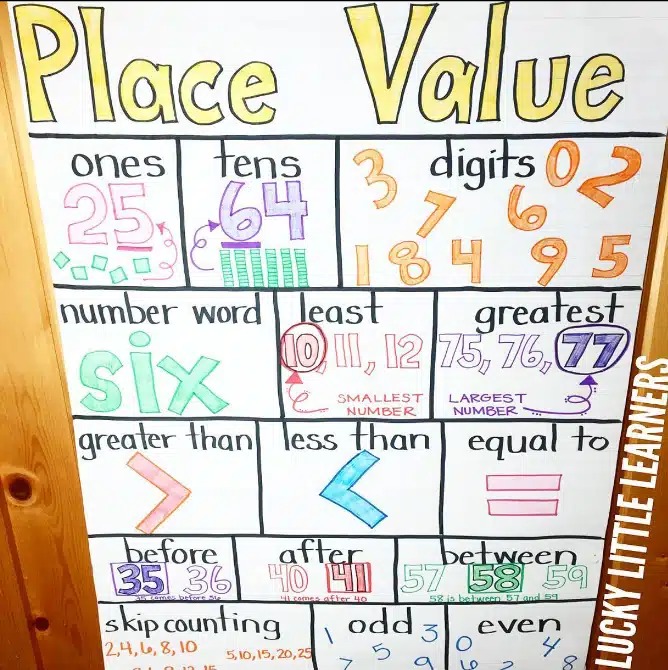
You need to familiarise students with essential terms that will keep popping up. Include terms like digit, value, place value, ones, units, tens, hundreds, and base-10

Reading big numbers can be intimidating, and all boils down to place value. Help the students to read the numbers in their house positions.



Students need to see that numbers can be expressed in many ways and still maintain the same value.

This place value anchor chart is an excellent way for students to become familiar with place value and pick out which value falls under each position when completing practice problems.


This place value anchor chart comes with everything you need. It covers chart form, standard form, word form, expanded form, and base 10 form.



This colorful place value anchor chart will be a great display on your math bulletin board. There are 11 printable posters ranging from “ones” to “millions” and everything in between.

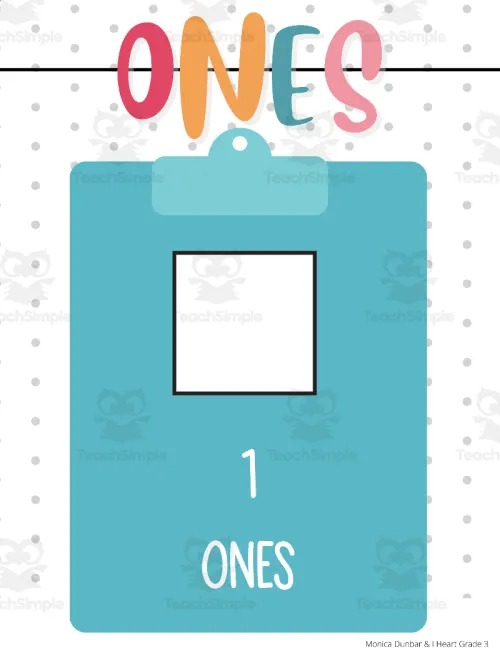

These posters are a perfect companion to your place value unit. Each picture has the word form, a drawn representation, and conversion charts to help your students visualize how base 10 blocks transform into higher values.



Place value concepts are represented visually as students will drag, drop, and sort images. A self-grading Google Forms quiz is also included as a follow-up that will provide you with valuable data.



With this resource, students will assemble a mini place value book. Explicit instructions for how to make these booklets are included.


This resource includes mats with pots representing the tens and coins representing the ones. Students spin for gold on the tens and the ones to make a number.



This chapter mini provides curriculum-based content in the form of timed drill activities. Great for understanding base-ten and the place value of numbers.

This Christmas light place value activity is fun for your students to practice math during the holiday season while having cute decor to display in your classroom or hallway.



Bingo is the perfect way for your students to interact and practice math!



Students will love using this interactive learning activity to practice hundreds, tens, and ones. Directions are included for prepping and assembling these books!
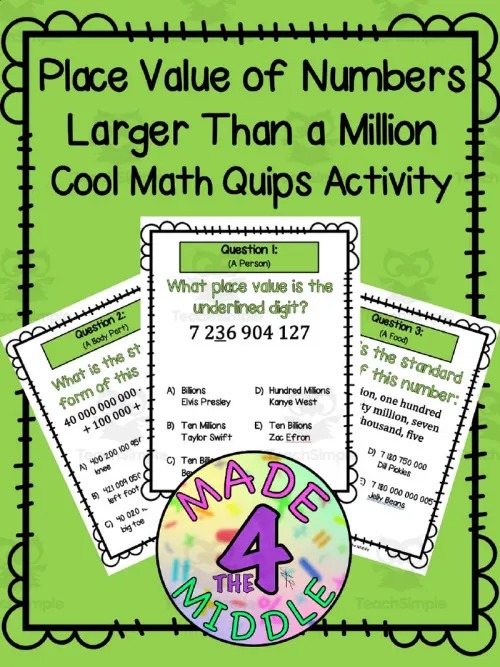


This is a Cool Math Quips Activity: Place Value of Numbers Larger Than a Million that will challenge your math students in a fun way.


A comprehensive pack of place value practice questions, with answers designed to help kids aged 9-12 learn to use place value with numbers up to ten million.



Use this number of the day place value routine as your daily warm-up. This printable worksheet can be put in a sheet protector to be used daily without having to make new copies.

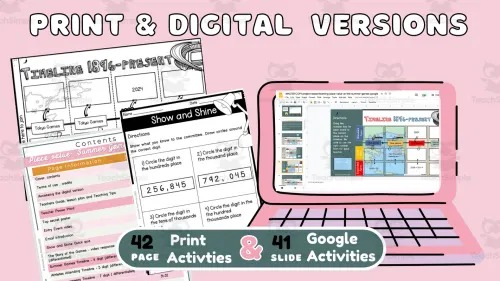
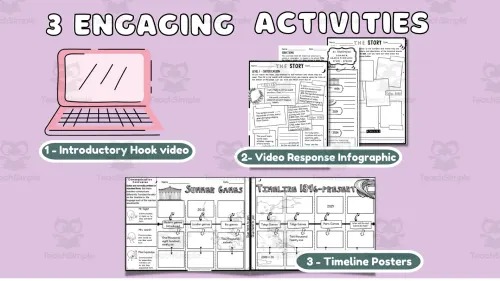
This project-based learning math activity covers place value number forms. A fun video to introduce the unit, after which students will convert standard form, word form, and expanded, all in the context of the Summer Games in Paris 2024.



This interactive notebook covers place value, rounding, comparing, and ordering numbers.



Take a deep dive into place values and numbers with easy-to-follow worksheets covering subitizing, recognizing, representing, more/fewer/same, and more.



This download is a 77-page resource full of activities to practice beginning place value.
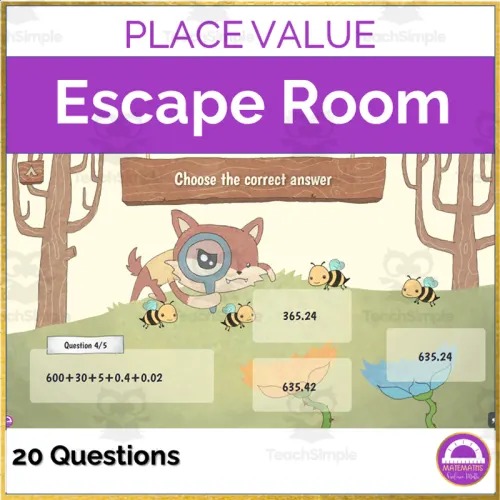

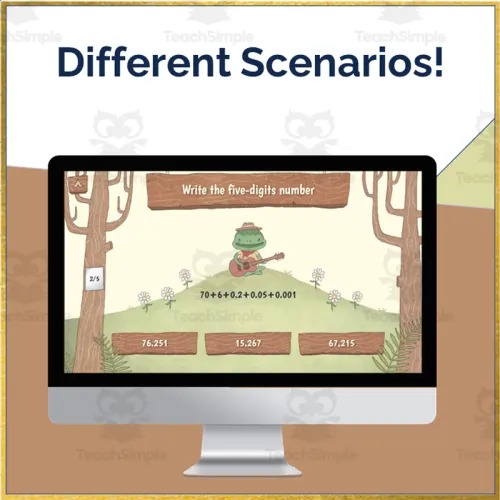
6th graders will love this digital math escape room on place value. Your students will have to solve the problems and collect the badges.


These place value charts cover whole numbers and decimal-place values. Some are available in color or black and white and are great for interactive math notebooks. Others can be printed to paste in and blown up to display on your wall.
Learning through play is what children are designed to do, so it makes sense to incorporate it into the classroom. These games will help consolidate concepts, and the students will hardly notice that they are doing math.
